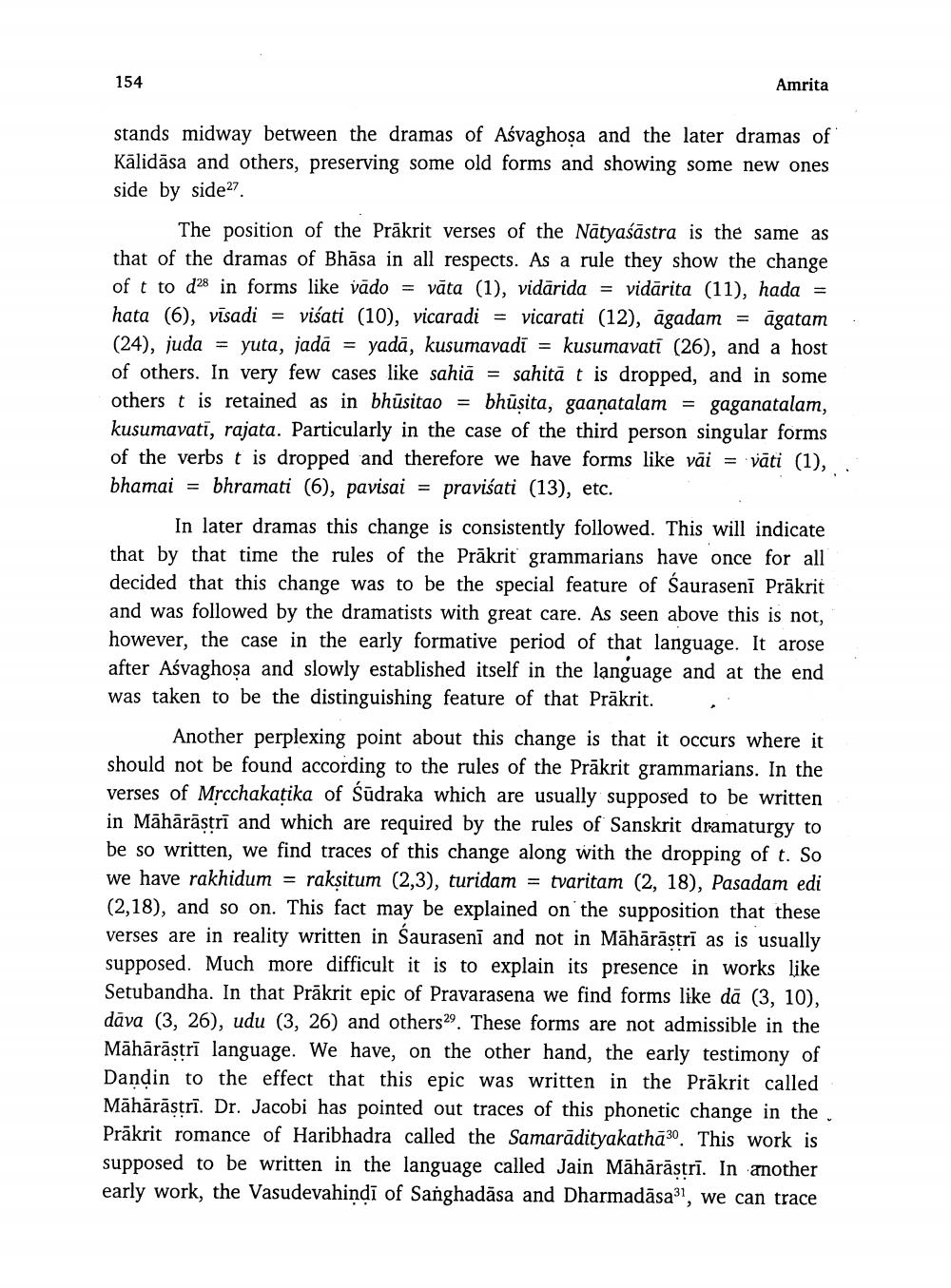________________
154
Amrita
stands midway between the dramas of Aśvaghosa and the later dramas of Kālidāsa and others, preserving some old forms and showing some new ones side by side27
.
The position of the Prākrit verses of the Natyaśāstra is the same as that of the dramas of Bhāsa in all respects. As a rule they show the change of t to d28 in forms like vādo = vāta (1), vidārida = vidārita (11), hada = hata (6), vīsadi = visati (10), vicaradi = vicarati (12), āgadam = āgatam (24), juda = yuta, jadā = yadā, kusumavadi = kusumavati (26), and a host of others. In very few cases like sahiä = sahitā t is dropped, and in some others t is retained as in bhūsitao = bhūsita, gaanatalam = gaganatalam, kusumavati, rajata. Particularly in the case of the third person singular forms of the verbst is dropped and therefore we have forms like vãi = vāti (1), bhamai = bhramati (6), pavisai = pravišati (13), etc.
In later dramas this change is consistently followed. This will indicate that by that time the rules of the Prākrit grammarians have once for all decided that this change was to be the special feature of Sauraseni Prākrit and was followed by the dramatists with great care. As seen above this is not, however, the case in the early formative period of that language. It arose after Aśvaghosa and slowly established itself in the language and at the end was taken to be the distinguishing feature of that Prākrit.
Another perplexing point about this change is that it occurs where it should not be found according to the rules of the Prākrit grammarians. In the verses of Mrcchakatika of Sūdraka which are usually supposed to be written in Māhārāstri and which are required by the rules of Sanskrit dramaturgy to be so written, we find traces of this change along with the dropping of t. So we have rakhidum = raksitum (2,3), turidam = tvaritam (2, 18), Pasadam edi (2,18), and so on. This fact may be explained on the supposition that these verses are in reality written in Sauraseni and not in Māhārāstrī as is usually supposed. Much more difficult it is to explain its presence in works like Setubandha. In that Prākrit epic of Pravarasena we find forms like dā (3, 10), dāva (3, 26), udu (3, 26) and others29. These forms are not admissible in the Māhārāstrī language. We have, on the other hand, the early testimony of Dandin to the effect that this epic was written in the Prākrit called Māhārāstrī. Dr. Jacobi has pointed out traces of this phonetic change in the Prākrit romance of Haribhadra called the Samarādityakathā30. This work is supposed to be written in the language called Jain Māhārāstrī. In another early work, the Vasudevahindī of Sanghadāsa and Dharmadāsa, we can trace




